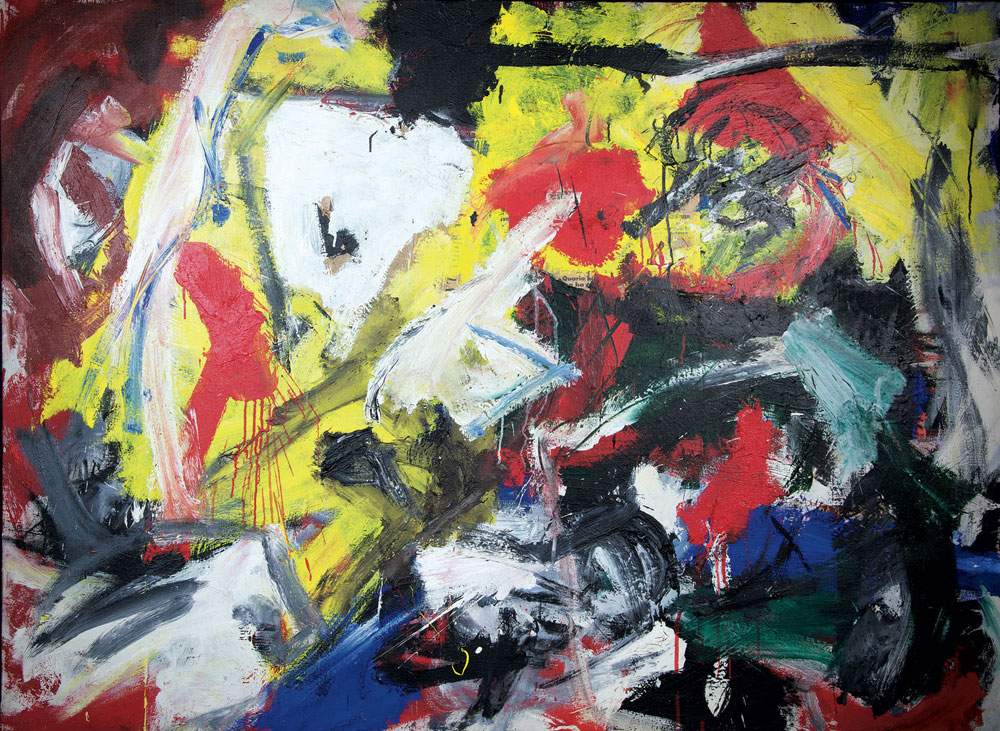Free, between Warhol, Vedova and Christo. An exhibition at GAMeC pays homage to creative freedom
GAMeC - Galleria d’Arte Moderna e Contemporanea di Bergamo presents from May 30, 2019 to January 6, 2020 the exhibition Libera. Between Warhol, Vedova and Christo, the second project in the cycle The Impermanent Collection, which aims to make the museum’s collection a tool for activating memories and engaging the public.
The exhibition, curated by Beatrice Bentivoglio-Ravasio, Lorenzo Giusti and Fabrizia Previtali, is intended as a tribute to creative freedom andemancipation from the constraints of tradition: an exhibition project that stems from GAMeC’s collections and a nucleus of works confiscated in Lombardy and managed by the National Agency for the Administration of Seized Assets, giving rise to a rich selection of masterpieces, some created by the most celebrated international artists of the second half of the 20th century; from Informal to Geometric Abstraction, from Nouveau Réalisme to Pop Art, from Minimalism toArte Povera.
Four thematic sections: Free from Form, Free from Figuration, Free from Style, Free from Representation.
The first section brings together a series of paintings and drawings by some of the most important exponents of the Informal movement, along with others less well known.Informal art eschews the constraint of form, whether figurative or abstract, to bear witness to a communicative urgency, resorting to the power of the sign and the essence of pure matter. Works from the 1950s and 1960s by masters of the gestural current, such as Wols, Mark Tobey and Georges Mathieu, in which the sign flows in calligraphic narratives, or stands out against backgrounds with registers of color, as in the case of Hans Hartung, stand alongside pictorial specimens of a purely material matrix, such as Alberto Burri’s precious Tar (1950) and Ennio Morlotti’s Landscape in Imbersago (1957), both part of the GAMeC Collection. Also present is Emilio Vedova ’s painting Ciclo 61/62 N.4 (1961-62), in which matter and gesture coexist within an original composition characterized by the presence of bright colors and collage inserts.
The second section is devoted toGeometric Abstraction, with global phenomena such as Minimalism andOptical Art, within which the artists’ desire to emancipate themselves from the constraint of figuration finds expression.
Significant is the path of Victor Vasarely, who, after the geometric compositions of the early 1950s, moves toward an increasingly rigorous reduction of forms and colors, until he arrives at the essentiality of infinitely combinable and variable black-and-white double-color modules. In Sol LeWitt’s more recent painting Horizontal Brushstrokers, on the other hand, short oblique, undulating lines animate and combine, filling the red plane. From the modular treatment of pure geometric elements and colors that induce a moving perception of the surface, of which Getulio Alviani’s Superficie a testura vibratile (1972) is also an example, a comparison is proposed with creations that presuppose the consideration of the surface of the work itself as an autonomous element of expression and meaning to be varied and adjusted in relation to the surrounding space.
Superimpositions of planes, of inside and outside, of fullness and emptiness in the works of Remo Bianco and Paolo Scheggi, in the extroflexions of Enrico Castellani and Turi Simeti, up to the increasingly pure essentiality of Ettore Spalletti’s sculptural creations.
The third section houses a selection of works by Italian artists traceable toArte Povera. Characteristic of this group, born towards the end of the 1960s, was not to seek a recognizable style, common to the different exponents, but to work through the use of poor materials, with the intention of evoking the possible primary structures of language, overcoming the idea of the work of art as a supratemporal and transcendent entity. Examples are the creations of Giulio Paolini and Luciano Fabro, Giuseppe Penone and Pier Paolo Calzolari. Finally, the precious Dolphin (1966) by Pino Pascali, a work of great scenic impact recently acquired by GAMeC, one of the rare specimens with head and tail emerging and breaking on the wall.
Protagonists of the fourth section are some currents of the 1960s and 1970s, such as New Dada, Nouveau Réalisme and Pop Art, in which it is the object itself that takes on artistic value. Among the works on display are two accumulations by Arman, a compression by César and a wrap by Christo, among the very first of his production (1963), while on the Pop front Andy Warhol ’s silkscreen print depicting Giorgio Armani (1981) transforms the image itself into a mere consumer object.
For info: www.gamec.it
Image: Emilio Vedova, Cycle 61/62 No. 4 (1961-1962; oil and paper on canvas, 146.5 x 200 cm;
Italian State, on consignment to the Regional Secretariat of the Ministry of Cultural Heritage and Activities for Lombardy/ On loan to the City of Bergamo for GAMeC).
© Roberto Morelli / Scalpendi publisher
 |
| Free, between Warhol, Vedova and Christo. An exhibition at GAMeC pays homage to creative freedom |
Warning: the translation into English of the original Italian article was created using automatic tools. We undertake to review all articles, but we do not guarantee the total absence of inaccuracies in the translation due to the program. You can find the original by clicking on the ITA button. If you find any mistake,please contact us.



























